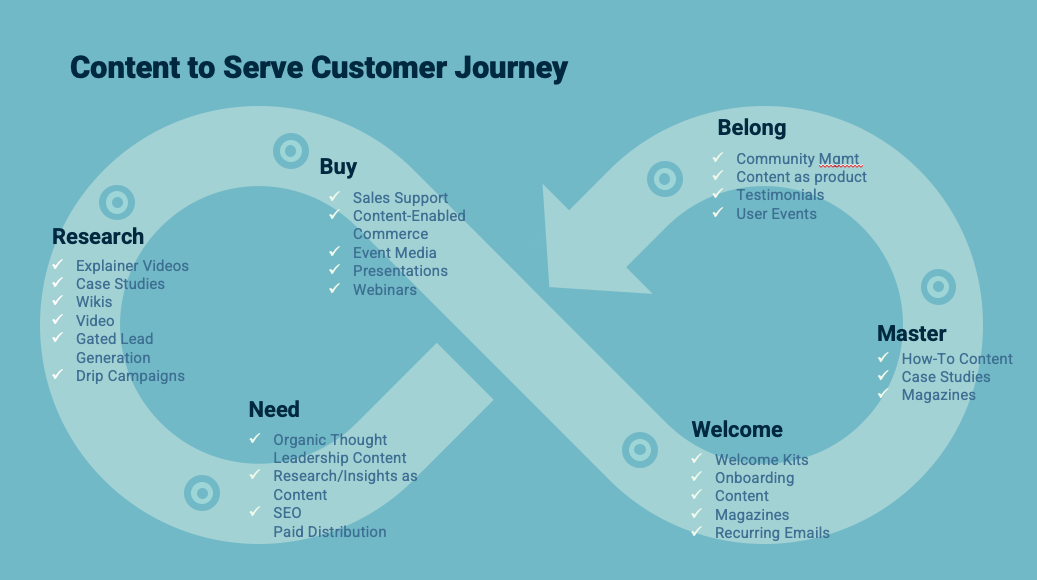



By John Lavey, President
With the labor market as tight as it is, it has never been harder to attract and retain talent. If your company is like some, the move to remote work means that you are no longer just competing with companies in your geographic area; you are competing against the rest of the world for the best people in your industry.
Finding ways to stand out from the competition and truly engage potential candidates for hire is hard to do, but using video to assist your recruiting efforts is a dynamic way to meet that challenge.
Short videos that tell authentic stories about who you are and why someone would want to work with you right now can cut through the details you will likely have to share in a job posting.
Here are some of the tips for what you will want in an effective video to accompany your recruitment postings:
Short—The most popular format for viewing videos right now is on TikTok, and the sweet spot for length of video there is 7 seconds to 15 seconds. Chances are you can’t communicate the value of a role in a TikTok video, but you should aim for brevity. There are industry-specific and platform-specific standards, but getting a video to 1 minute is a good goal.
Authentic—Letting your passion come through about your mission as an organization and why you care about what you do is important. It’s not so much what you say as how you say it. That energy is contagious.
Clear—Get to the point quickly, or create a clear call to action about what they can do next if interested. The platforms themselves can provide an assist here. But if it’s important, for example, to make it clear whether you are open to remote work, say it out loud.
Storytelling content is a critical part of every stakeholder journey, not just your customer journeys. Think about how you can help your prospective employees at each stage of their search. Video can help.
Image: Getty Images
About Hammock Healthcare Idea Email | This post is part of Hammock’s award-winning Idea Email series. Idea Emails are sent every other week and share one insightful marketing idea. Idea Email comes in two flavors: Original and Healthcare. To subscribe to the original Idea Email (general marketing ideas), click here. To subscribe to the Healthcare Idea Email (healthcare marketing ideas), click here.

By John Lavey | Hammock President and COO
My conversations with healthcare organizations—providers, payers, pharma companies, technology or service solutions—show me that the marketers within those organizations need more help understanding the industry that is there to support their efforts.
When Hammock was founded 30 years ago, we were not known as a marketing company. We were known as a custom publishing company. At the time, it was appropriate for describing what we did: creating recurring custom-published marketing media for clients (which they owned) to accomplish a business objective.
It also helped explain how we were different from advertising agencies or public relations (PR) firms. Our work went directly to customers and prospects. Advertising and PR were piggybacking on someone else’s published media to reach customers and prospects.
During the Great Recession (2007–2009) many print newspapers and magazines collapsed. Traditional advertising agencies and PR firms also took a hit when those media failed.
The vocabulary to describe what we do to help clients communicate and grow started changing. For example, the industry organization Rex Hammock co-founded in 1998, the Custom Publishing Council, became the Custom Content Council.
Advertising and PR functions are still critical, of course. One consideration is who has expertise in going direct to audiences, and who is there to help efforts using someone else’s media?
We’ve evolved new capabilities and embraced new media, from digital to video to social. But where we add value is the same today as it was in 1991. We help support and nurture the customer journey, before they are a customer, and afterward. We deliver strategy and implementation, as well as measurement of key performance indicators, and we help our clients establish themselves as thought leaders in their respective fields.
Everybody has a story to tell, a message to deliver, and we specialize in helping you take yours directly to the people who need to hear, read or view it so that you can continue to grow.
Image: Getty Images
About Hammock Healthcare Idea Email | This post is part of Hammock’s award-winning Idea Email series. Idea Emails are sent every other week and share one insightful marketing idea. Idea Email comes in two flavors: Original and Healthcare. To subscribe to the original Idea Email (general marketing ideas), click here. To subscribe to the Healthcare Idea Email (healthcare marketing ideas), click here.

By Rex Hammock, CEO
For the past few weeks, I have been reading about what marketers have learned throughout the COVID-19 pandemic. One of the most insightful articles I’ve read was “10 Truths About Marketing After the Pandemic,” written by Janet Balis and published in the Harvard Business Review.
Balis, the customer and growth market leader and marketing practice leader at EY Americas, does a great job of explaining how marketers—especially content marketers—are having to adjust their relationship to customers. In her article, she identified 10 ways in which the pandemic has challenged truths about marketing and given us new rules to move forward. Here, I’m highlighting three of those old truths and new rules.
Old Truth: Customers must sit at the heart of your marketing strategy.
New Truth: Customers must sit at the heart of your customer journey.

We write a lot about the customer journey—because we know how important it is. Imagine an infinity loop to show a customer’s life cycle. With the right content marketing, you can help prospects become leads, convert them to customers, and focus attention on them so you create a loyal relationship.
Old Truth: Relationships matter.
New Truth: Relationships are everything.
“It goes without saying that it is vital to build relationships with customers founded on trust,” Balis wrote.
In March 2020, Edelman conducted a global consumer study and found that 60% of people were turning more and more to the brands they were absolutely sure they could trust. Why? According to Richard Edelman, CEO of Edelman, trust is a “game changer for brands because it addresses people’s fears about personal safety, most notably vulnerability on health, financial stability, and privacy.”
That’s why it’s critically important to form genuine connections with your customers, listen to their needs and opinions, and help them find solutions for their problems. Without your customers, your business would not exist.
Old Truth: Marketing is important for growth.
New Truth: Marketing is at the center of the growth agenda for the full C-suite.
We’ve noticed this to be true with several of our clients. As Balis said, “marketing has been elevated within the C-suite as a driver of digital transformation, a key leader of the customer journey, and the voice of the consumer—all of which are of paramount importance to other functional leaders.”
A 2019 report from McKinsey & Company suggests that high-growth companies are seven times more likely to have a chief marketing officer who fosters robust and collaborative partnerships across the C-suite. Why? Because the CMO makes sure that the rest of the C-suite understands how marketing is driving growth and serving the company’s broader goals and objectives, the report says.
Takeaway: Balis said it best: “Marketing now has the opportunity to seize an ongoing central role in the dialogue, thereby driving the organization’s broader growth and innovation agenda.” To read the full article, and Balis’s seven other new rules, click here.

By John Lavey | Hammock President and COO
I heard a great question this week from a prospective client: Why do customers choose you and why do they stay with you?
It’s a great question because the person who asked it recognized the fundamental value of how a relationship works. A good business partner offers more than what you sought them out for in the first place.
Developing recurring content, across a variety of media, to support a business objective typically requires skill sets that are too specific and too expensive to replicate in-house.
Most healthcare companies that want to do content marketing need a partner with the subject matter expertise, team, processes and experience to help.
In many cases, they are looking for a partner because they’ve come to the conclusion that they can’t justify the investment in-house. So they see it as a replacement for a full-time equivalent (FTE) or FTEs.
But long-term relationships are much more than a replacement for an FTE.
Sure, with the right partner, clients find that they are able to focus on projects and other priorities that serve their core business. And the clients understand that a professional process makes it easier on their team.
But there is deeper, more fundamental value when you find the right outside partner. You have an extension of your team that is focused on serving your customers and prospects, just like you are, with solutions that perfectly position your brand.
A good outside partner can serve as a sounding board, and constantly challenge you to focus on the audience’s concerns, and not corporate speak.
The right outside partner’s access to domain expertise is valuable for helping you hone your message.
And the right outside partner starts to show you all the ways content plays a role in moving healthcare customers through their journey, such as building presentations for sales or investor groups, developing training videos, or helping improve their client conferences, to name a few.
Finding the right partner means looking at the reasons they are the right fit for right now, but also for next year and the years to come.
About Hammock Healthcare Idea Email | This post is part of Hammock’s award-winning Idea Email series. Idea Emails are sent every other week and share one insightful marketing idea. Idea Email comes in two flavors: Original and Healthcare. To subscribe to the original Idea Email (general marketing ideas), click here. To subscribe to the Healthcare Idea Email (healthcare marketing ideas), click here.

By John Lavey | Hammock President and COO
About Hammock Healthcare Idea Email | This post is part of Hammock’s award-winning Idea Email series. Idea Emails are sent every other week and share one insightful marketing idea. Idea Email comes in two flavors: Original and Healthcare. To subscribe to the original Idea Email (general marketing ideas), click here. To subscribe to the Healthcare Idea Email (healthcare marketing ideas), click here.

By John Lavey | Hammock President and COO
I have been struck in a few recent conversations by the idea of how “warm” and “cold” healthcare can be in terms of engaging us as customers. I was talking to someone whose wife has been undergoing cancer treatments and has a 20-minute meeting once a month with the doctor. In those 20 minutes, she feels exceptionally cared for. It’s a warm experience.

By John Lavey | Hammock President and COO
For companies that are continuing to work from home, new employees are largely deprived of the ad hoc interactions from mentors and peers that help them learn how to do their job. That’s why some of the most crucial content being generated by healthcare companies right now is learning content.
Learning content is necessary for many companies so that employees can gain certifications and remain compliant with regulations.

By John Lavey | Hammock President and COO
One of my goals for 2021 is to help people understand the full scope of content marketing and what it can do for an organization. Content marketing tends to get pigeonholed as “thought leadership” or “lead generation,” or “search engine optimization.” While it is those things, it’s much more than that.
Content marketing should sustain and nurture all the steps along your customer’s journey. And this doesn’t always mean it’s necessary to create a larger content marketing budget (although it probably should) but it does mean that content marketing should be thought of more holistically.

By John Lavey | Hammock President and COO
Wisdom isn’t a word used a lot in marketing. But we need more of it to solve our challenges.
Most clients we work with have a full plate of responsibilities, along with a bewildering number of options for partners and data from a number of platforms. The environment in which they are operating has a lot of noise, but not always enough signals for what direction to head.

By Steve Sullivan, National Sales Director
You’ve heard Hammock talk over the years about how marketing with content should never solely focus on a product’s features and benefits. We should focus on the solutions a product, service or treatment delivers. I heard that reinforced in a talk this week by Michelle Peluso, senior vice president of digital sales and chief marketing officer at IBM.
Peluso started Site59, a last-minute travel site, which survived 9/11 and then was bought by Travelocity, where she rose to be CEO. After C-Suite stops at Citigroup and Gilt, she now runs global marketing and brand initiatives for IBM―quite a resume.